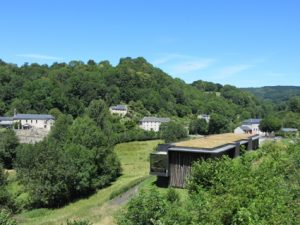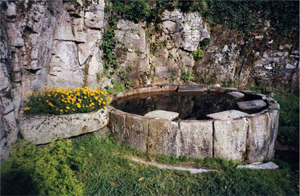Accueil / Homepage » The territory

 Ferrières (Fontrieu district) is located in the department of Tarn (Occitanie) two hours from Toulouse, one hour from Albi and 25 minutes from Castres. Historical place, this district belongs to the “canton” of Vabre as well as the district of Castres. With an average altitude of 500 m and an area of 1200 ha, Ferrières is a rural hamlet of 150 inhabitants. The activity is mainly agricultural (sheep and cattle farms) and forestry.
Ferrières (Fontrieu district) is located in the department of Tarn (Occitanie) two hours from Toulouse, one hour from Albi and 25 minutes from Castres. Historical place, this district belongs to the “canton” of Vabre as well as the district of Castres. With an average altitude of 500 m and an area of 1200 ha, Ferrières is a rural hamlet of 150 inhabitants. The activity is mainly agricultural (sheep and cattle farms) and forestry.
Since 1 January 2016, the towns of Ferrières, Castelnau de Brassac and Le Margnès have come together to form the municipality of Fontrieu.
Ferrières and its hamlets are scattered on both banks of the stream «Ferralgues» tributary of the river Agout. The hamlets are located upstream and cling halfway up the slopes on the advances that dominate the valley. Each hamlet has its own water point
As an example, at the Vayssière, we can see the “tin” (monumental fountain in photo). The ponds were used to irrigate the meadows. Farmers lived in autarky by raising a few animals.
The castle of Ferrières and the old houses form the town which turns out to be a curious historical place. And it is in this quiet place rich of a prestigious past that the Ferrierols will welcome you.
The Château de Ferrières, now privately owned, reached its peak in the second half of the sixteenth century with Guillaume de Guilhot, a three-times Protestant lord governor of Castres
It is a seigneurial residence , richly decorated in a Renaissance style, bought by the States of Languedoc, it became State prison under Louis XIV, barracks of dragons after the revocation of the Edict of Nantes and finally sold as a national property during the Revolution.
On six existing towers (hexagonal shape with rectangular courtyard and hanging garden) only three remain, razed to roof height after the Revolution, the others having served as a «quarry» to build the houses of the surrounding hamlets.
The textile tradition that took shape at the end of the Middle Ages and intensified in the seventeenth and eighteenth centuries enriched families of Protestant manufacturers who built these massive houses in the nineteenth century (2 or 3-storey houses with 4 sloped roofs). The ground floor housed the looms, the house was upstairs; the people of the village often owned looms and worked for them. The manufacturers took over the land and acquired the large farms of the whole mountain.